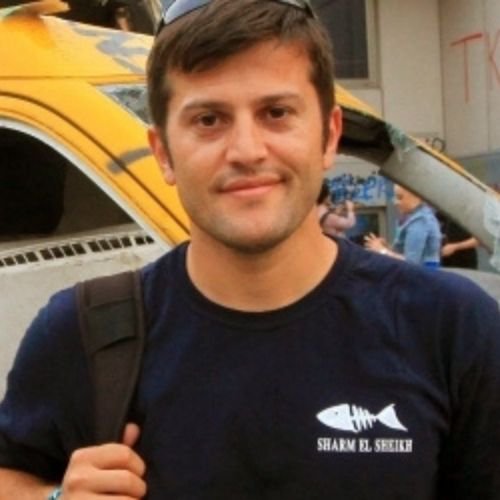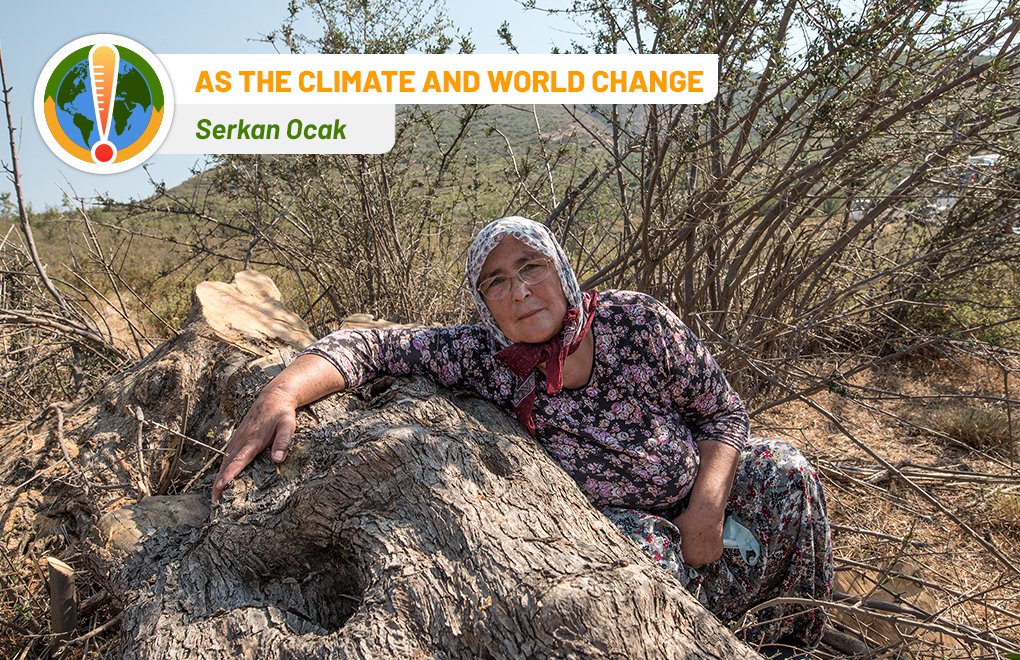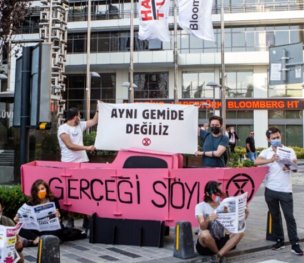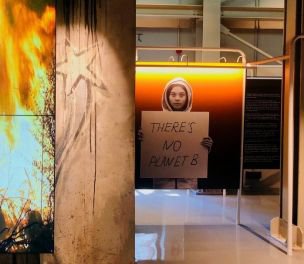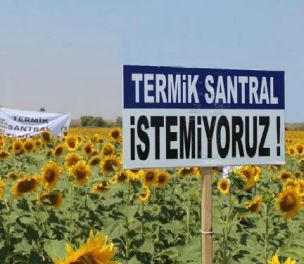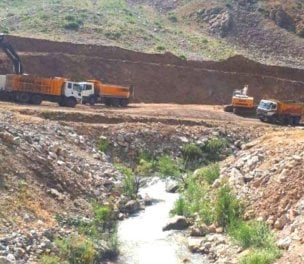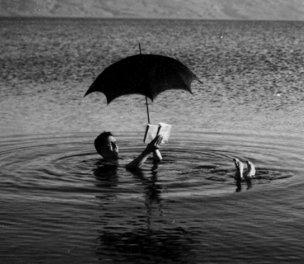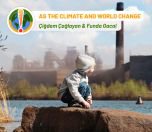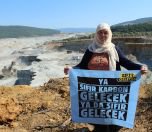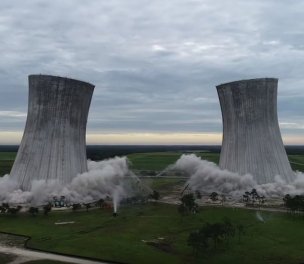Click to read the article in Turkish / Kurdish
The first time I have seen a wind power plant (WPP) was in Bozcaada. It was 15 years ago, I think.
At the westernmost tip of the island -at sunset- I had taken very beautiful photographs with my camera using negative films.
This wind power plant, established in 2000, was among the first renewable energy sources of Turkey.
I wished that these windmills were all over Turkey. It was clean energy, after all, and the view was beautiful.
Now, it is possible to come across wind farms all over Turkey thanks to Renewable Energy Law and the incentives given to wind power.
I have never thought that the windmills that I once took photographs of and wished to be everywhere would cause problems.
I have never thought that they will be built on pastures, forest areas, on the shores of olive groves and villages... That they will threaten the right to life and economic activities of the local people... That they will destroy 600 thousand square meters of forest area, which functions as a carbon sink, by constructing a road of about 100 kilometers with a width of six meters only to transport the turbines... That they will cover maquis and olive trees with heavy dust because of the company vehicles which come and go for the maintenance of the wind tribunes... That they will make it impossible to feed the goatherds in the pastures and cause a decrease in yield and developmental disorder in the olives covered with dust... That they will make life unbearable by the aerodynamic noise coming from the turbines built within 90 meters of the houses.
For these reasons, there has been an intense struggle for the last ten years against WPP investments in İzmir Karaburun, which is a "special environmental protection zone."
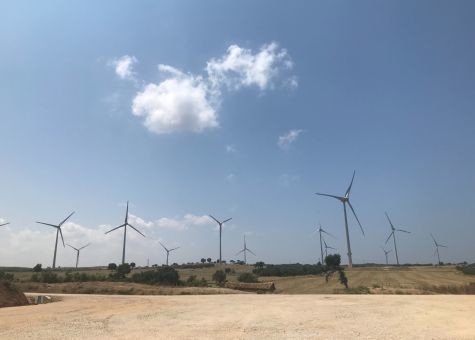
Credit: Serkan Ocak
Delayed justice
The first steps regarding the project in Karaburun were taken in 2005. Environmental Impact Assessment (EIA) reports were prepared, and construction activities started in 2012.
There are six projects in total. The first lawsuit was filed in 2014. A total of 18 cases have been filed so far, three of which have been taken to the Constitutional Court.
Not much, but a month ago, the Constitutional Court said that there is a violation of rights. However, that ship has sailed. As usual, justice came too late.
So why is there opposition to the wind farms in Karaburun?
Karaburun City Council is the main actor of the 10-year struggle. According to the council member Attorney Cem Altıparmak, this project contributes to the climate crisis instead of fighting it.
Altiparmak says that the duty of the state is to reduce greenhouse gas emissions, produce policies compatible with the consequences of the climate crisis, give up fossil fuel power plants, and promote renewable energy methods as an alternative. No one here has any objections.
However, this is the exact opposite of this principle. The most crucial problem is the location selection of renewable energy investments. The government has prepared regulations foreseeing that these facilities can be set up anywhere "without exception." From national parks to olive groves, from forest areas to pastures.
According to Altıparmak, this is a violation of the United Nationas Framework Convention on Climate Change (UNFCCC), to which Turkey is a party.
On the one hand, Turkey makes commitments to increase forests, pastures, and agricultural areas, which are natural sinks for combating climate change.
On the other hand, it destroys these areas under the name of a renewable energy project. "What a contrast!" Altıparmak says. It is exactly what is happening in Karaburun.
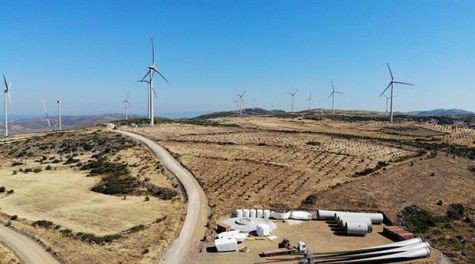
Karaburun is the apple of the Aegean's eye
Karaburun, right next to İzmir, has very vital features. This peninsula is the district of the İzmir province that has hair goats. The total pasture area is too small, but most of the hair goats live here. Almost all rangelands have a WPP project. It is an important natural area with extensive forests. Flora is crucial for fauna.
Karaburun is one of the regions where the government has the most contradictory policies regarding renewable energy policies. There is a complete mismatch.
Mr. Altıparmak gives the following information about how far the windmills should be from the houses, especially in the West: "Although it varies from country to country, the windmills should be ten times the distance between the ground and the farthest wing."
A wind tribune is 150 meters above the ground on average. It means that the houses should be built 1500 meters away.
However, there are wind tribunes within 90 meters of some houses in Karaburun.
Would we like these tribunes, which we admire while passing by, to be 90 meters away from our own house?
There is another issue about WPPs not in Karaburun, but especially in places on the bird migration route such as Thrace. The damage to the birds and some wild animals because of the magnetic wave generated by the wind tribunes during their rotation...

Unearned income of recent years: Biomass
Another source that falls under the definition of renewable energy is biomass. There has been a majestic increase in biomass facilities in Turkey, especially in the last few years.
Kadir Aca, born and raised in Samsun, Çarşamba, said, "We do not want to be poisoned. We want to live cleanly." Is biomass a poisonous renewable energy source?
In these facilities, energy is obtained by the direct combustion of biomass. Biomass consists of tree wastes, nutshells, corn straws, etc.
It is actually a kind of thermal power plant. You burn something and generate electricity.
When it is burned, emissions such as sulfur and nitrogen decrease, but there is extraordinary carbon emission. Therefore, this method is the subject of debate in the West today. Materials that need to be decomposed in nature are burned. How can something that has been burned come back?
Samsun Environmental Platform Spokesperson and Board Member of the Chamber of Electrical Engineers, Mehmet Özdağ, has been in a great struggle with the residents of the region against the biomass facilities, desired to be opened for a long time.
"While even this method is being discussed, the definition of biomass has been changed in Turkey in recent years. Garbages, exhausted tires, and sludge from treatment plants count as biomass with the enacted law. How can burning tires be biomass?"
According to Özdağ, while we had no biomass facilities in 2010, we had four biomass facilities in 2014, 13 in 2016, and 106 biomass facilities in 2020.
The increase is incredible!
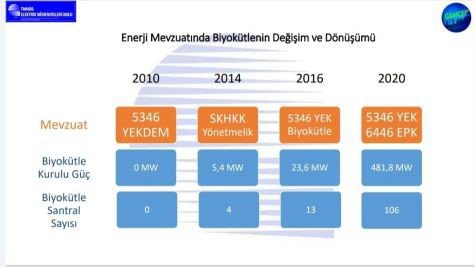
Source: Mehmet Özdağ
No limits, no bans
"Only in Çarşamba, 3,490 dollars of electricity is produced per hour. 14.6 dollar/cent per kilowatt-hour guaranteed. The source of the new abuse and the unearned income is biomass. Ten years ago, it was hydroelectric power plants." Özdağ warns.
According to Özdağ, the biggest evil done by the government is to prevent the public from production. Only certain groups can take permissions and incentives for these investments.
Özdağ also complained that there was no follow-up on what was burned in the new facilities: "The Governor's Office of Samsun has approved a facility that will burn 630 tons of fuel per day. 'EIA not required' report was given. Sometimes, these facilities are in agricultural areas that have a protested status, such as Çarşamba Plain. Normally, when construction is going to be made on the plain, structures with a base not exceeding 75 square meters and 15 meters of boreholes are allowed. But when it is called a biomass plant, there are no limits, no bans."
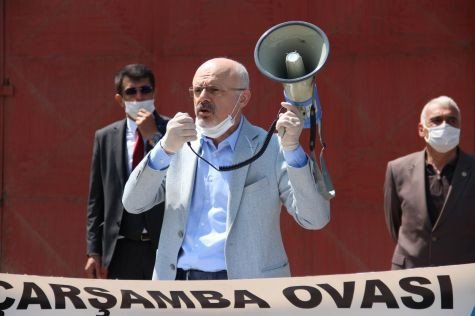
* While Mehmet Özdağ was making a press statement
Is geothermal clean or toxic?
In Orhanlı, near İzmir, there has been big opposition to renewable energy in recent years. Solar power plants (GES), wind power plants, and especially geothermal investments are planned in this small agricultural region.
Let's first look at Orhanlı and what kind of feature it has through the explanations of Dicle Tuba Kılıç, Chairman of the Board of Nature Association:
"The olive groves in Orhanlı are in an important natural area. It is also an ancient production center. Here, there are olive forests, not fields. In other words, it is not just an olive field that gives us olive oil, but an olive forest with orchids, birds, mammal species, sandalwood, and pine trees living under it. There are animal husbandry and beekeeping. An ecosystem that feeds wildlife and humans."

Olive forests turned into olive groves
According to Kılıç, all olive groves were like this in the ancient Mediterranean ecosystem. Olive forests are now turned into olive groves.
Two different companies are planning two geothermal power plants in Orhanlı. There are also solar and wind projects. So, the extracted water can be pumped back. All these projects are planned exactly inside the village, inside the olive forests.
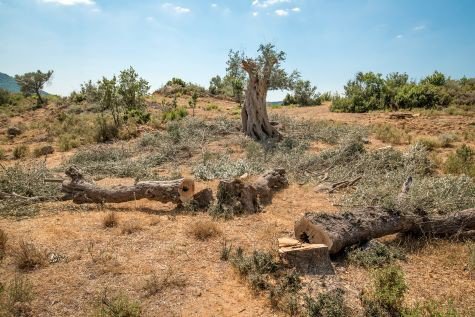
Kılıç mentions three drawbacks of the project. First, it is a threat to groundwater and surface water resources, as the extracted water cannot be fully discharged.
The water that comes out of the underground is not that innocent. There is boron, arsenic, and nitrate. These are substances that poison our soil and water.
Kılıç says that a previous geothermal power plant killed a tangerine orchard next to it. It is the second factor that poisons the soil. The third is the negativity to the weather. "A boiling water comes out. We do not know what kind of negative effects the 24-hour boiling water will have on the valley. It is not in the EIA reports. We do not know how it will affect the microclimate here. Maybe it will rain acid rain," Kılıç said.
Orhanlı is a village that receives immigrants, not vice versa. There is certified organic farming. "We are either portrayed as opponents to renewable energy or forced to be. Can such a place be destroyed to generate electricity under the name of renewable energy?"
The people of Orhanlı made a press statement the previous day (July 13, 2021), protesting the cutting of centuries-old olives and trees that bear witness to history.
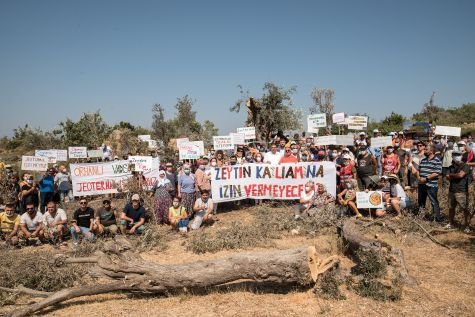
Water flows, Turks ignores!
The largest renewable energy investments in Turkey started with the Hydroelectric Power Plants (HEPP) after the Water Usage Rights Agreement in 2006. Veysel Eroğlu, Minister of Forestry and Water Affairs at the time, stated that the concept of "Water flows, Turks ignores" is left behind and demanded that a HEPP be built for every flowing water. It is what happened.
HEPP has been planned for almost every river, flowing from the mountains to the sea, especially in the Black Sea.
Yakup Okumuşoğlu is one of the lawyers who fight the most against HEPPs in Turkey. When I asked him the subject, he started his sentence, "I am not against renewable energy". And he continued: "I am against the destruction of streams under the name of renewable energy."
Explaining that it is wrong to fill every stream with HEPPs, Okumuşoğlu thinks that this is not suitable for the definition of renewable. According to Okumuşoğlu, the cycle of water is disrupted. Life in the streams is deteriorating. All biodiversity is severely damaged. It causes nature damage during the construction phase.
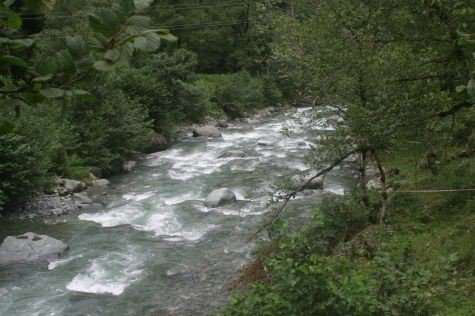
* Credit: Serkan Ocak
Norway protects 400 valleys
For years, I had the following question in my mind while covering news about the HEPP struggle: "Should we never do it? If we should, how?"
The answer of Okumuşoğlu was clear: "If I were a state, for example, I would look at Norway. It had taken an inventory of all the valleys and decided to open a certain number of valleys for energy production. It prepared projects not to harm nature. They decided to protect the 400 valleys completely. Now, they are untouched."
We, on the other hand, followed the opposite policy for years. More than 30 HEPPs are planned only for Solaklı Valley, which leads to Uzungöl in Trabzon.
If the struggle did not exist, 1600 river-type hydroelectric power plants would have been built in Turkey. In each project, 5 km of water is transported and confined to tunnels. It means the confinement of water for a length of 8 thousand km.
Fortunately, that didn't happen. There was a fight for years. Some valleys have been taken under protection.
There were 22 planned HEPPs in İkizdere. İkizdere has been declared a protected area. Only five of the projects could be implemented. Fırtına had 13 plans. It has been declared as a National Park and archeological site. So, they could not build. Fındıklı was also preserved. There is no other valley that is already protected. Many other projects have been implemented.
When you go to the Black Sea today, the view you will see is this: The water of the streams in the Black Sea has decreased a lot. The flow, which should have been in September, has arrived at the beginning of July.
The water cycle is broken. The water cannot get the minerals from the soil because it is imprisoned in the pipes. The pH of the water has decreased. It is not mineral water, just a liquid. It adversely affects the marine ecosystem.
There is serious opposition to renewable energy in Turkey. For all these reasons... (SEO/SO/EÜ/SD)
"As The Climate and World Change" article series*
Our life becomes history while we live! - Ömer Madra
1/ A country outside of the global climate policy: Turkey - Ebru Voyvoda
2/ Climate change, securitarian policies and ghosts - Özdeş Özbay
3/ Turkey's energy policy: Indigenous at home, Blue Homeland in the world - Emre İşeri
4/ The impact of climate crisis and fossil fuels on child health - Çiğdem Çağlayan & Funda Gacal
5/ We will see beautiful days, coal-free and sunny days - Elif Ünal
6/ Either capitalism or the future - Tuna Emren
7/ The three pillars of climate journalism: Science, politics, and social justice - Ece Baykal Fide
8/ Bringing science, struggle, and art together - Yasemin Ülgen
9/ Clean energy or betrayal? - Serkan Ocak
10 / It is time to say stop economic growth - Fikret Adaman & Gökçe Yeniev
11 / When climate refugees knock on our door - Mehmet Mücteba Göktaş
13 / Climate crisis affects women, women affect climate struggle - Merve Özçelik
14 / Climate fiction in literature- Buket Uzuner
15/ Dr. Faustus and children in the age of fire- Ömer Madra
* This series of articles is published with the financial support of Oslo Metropolitan University (OsloMet) Journalism & Media International Center.




